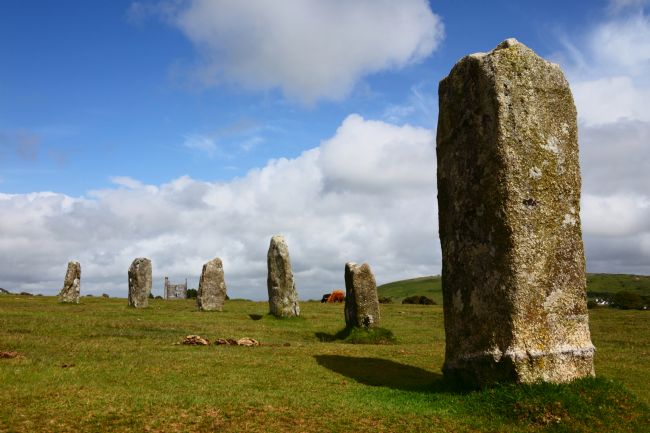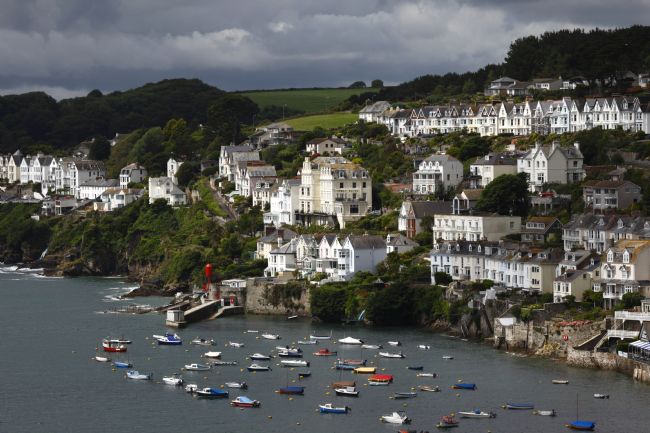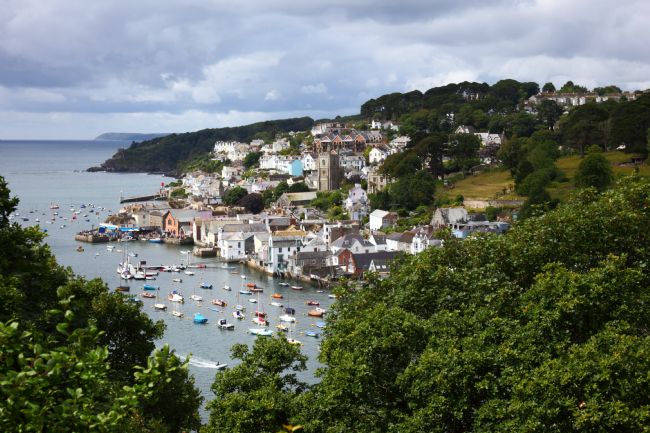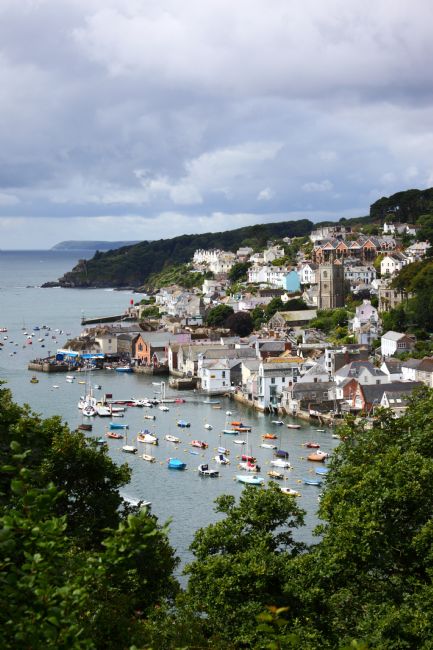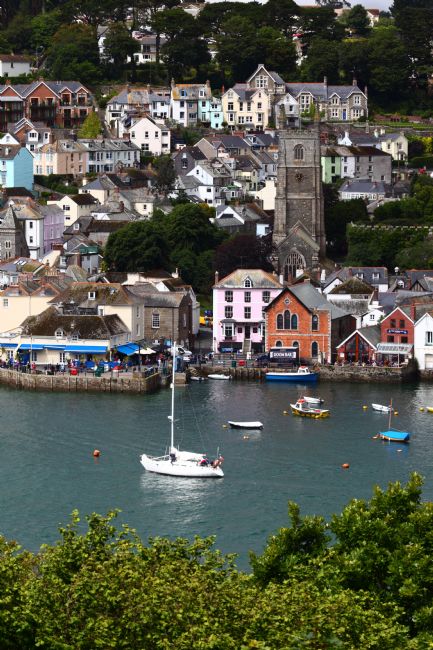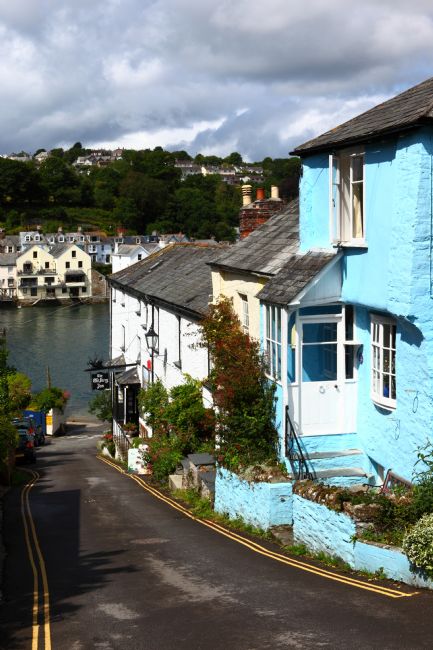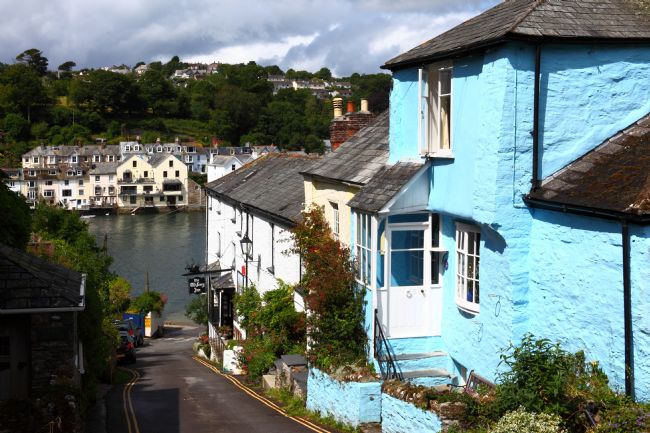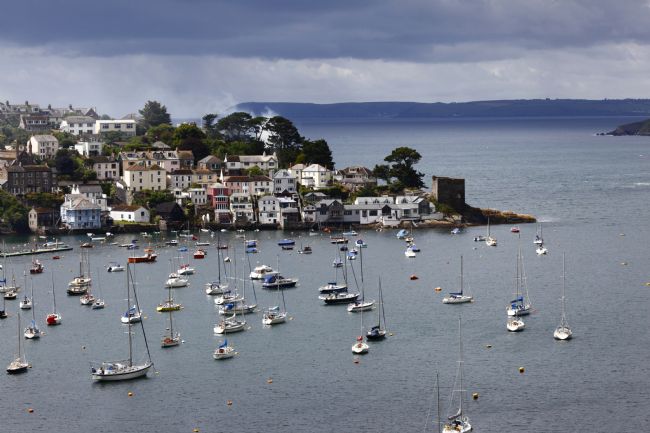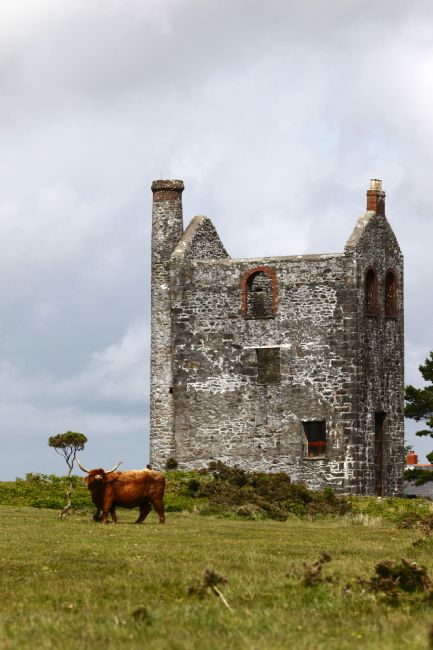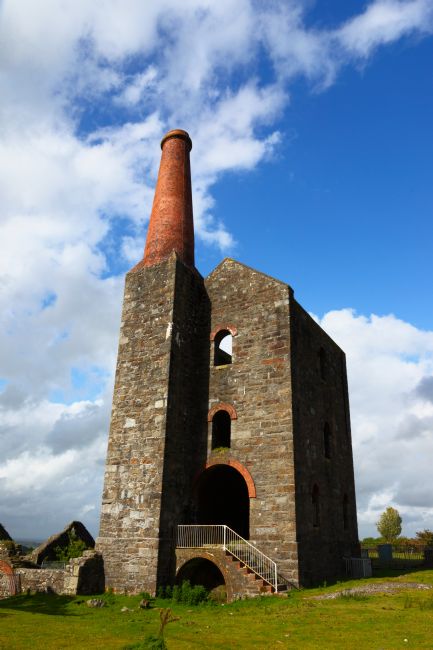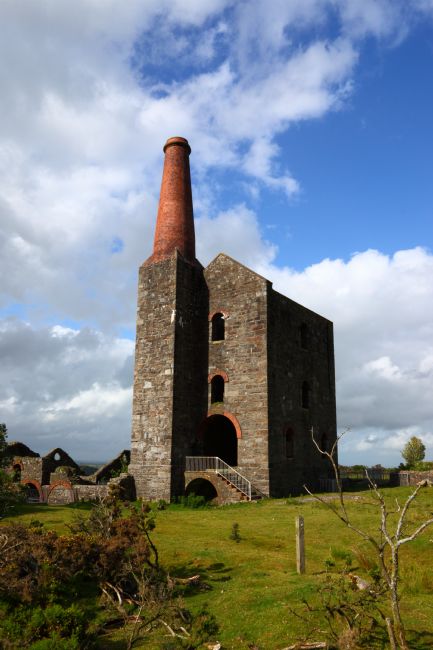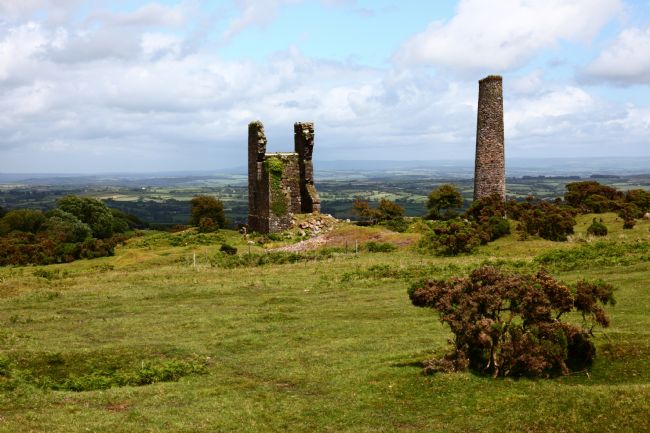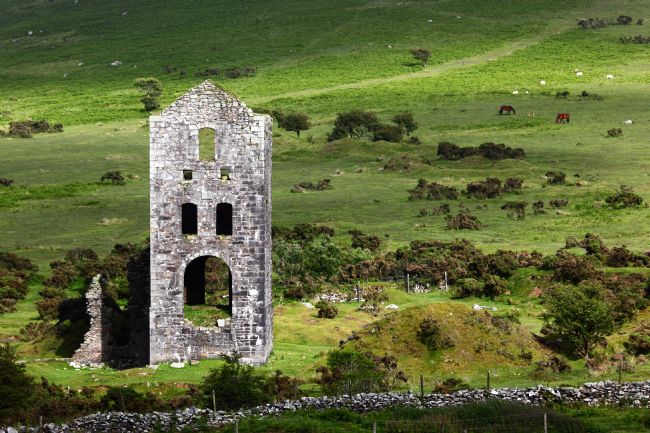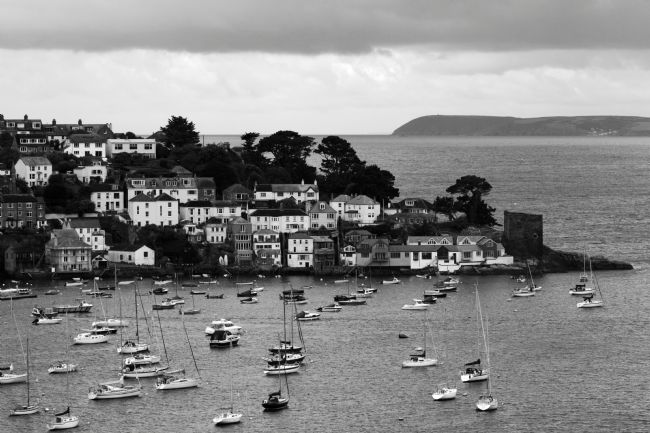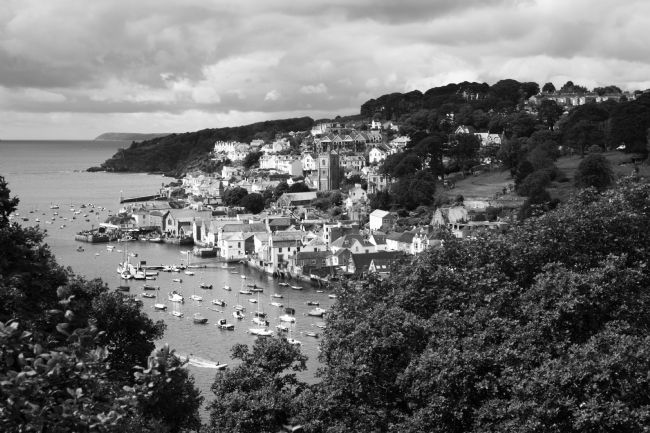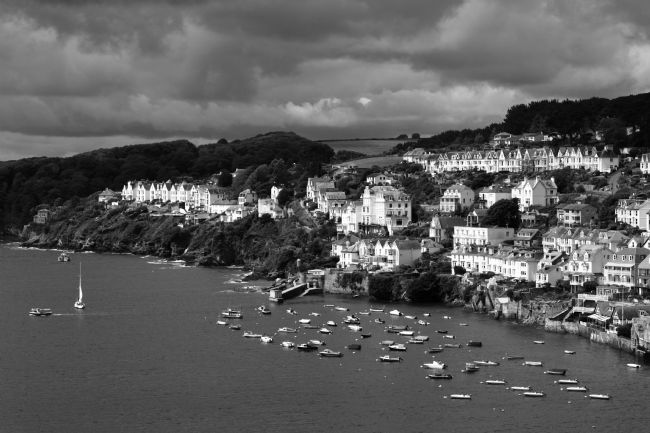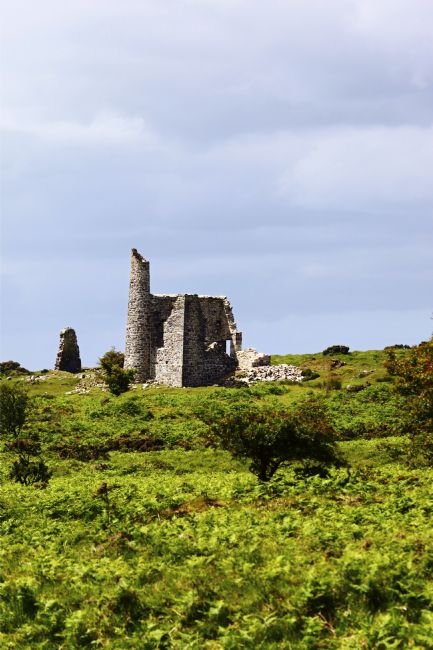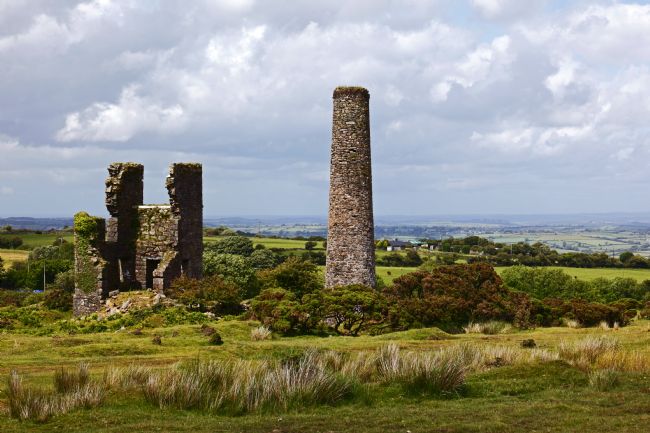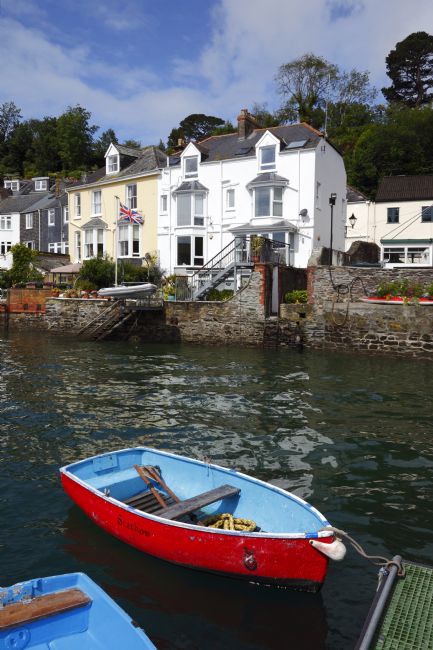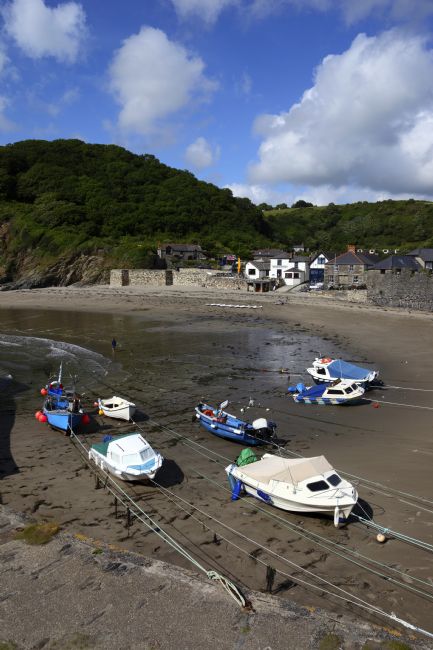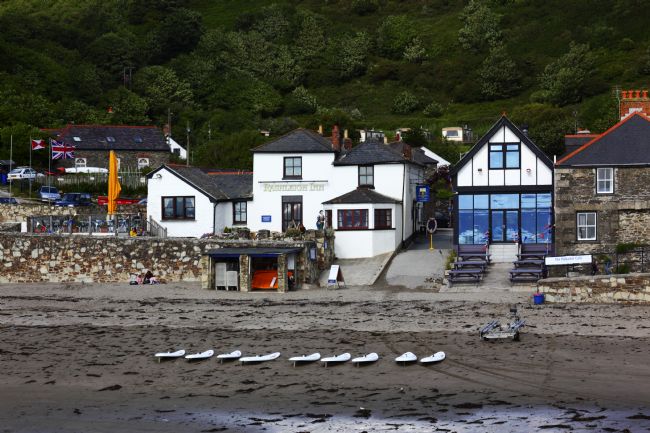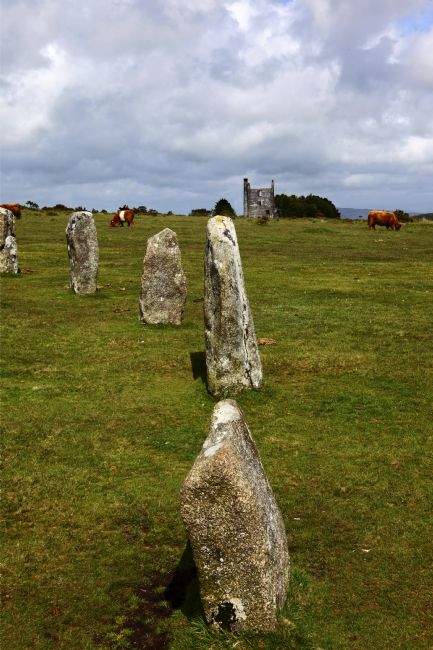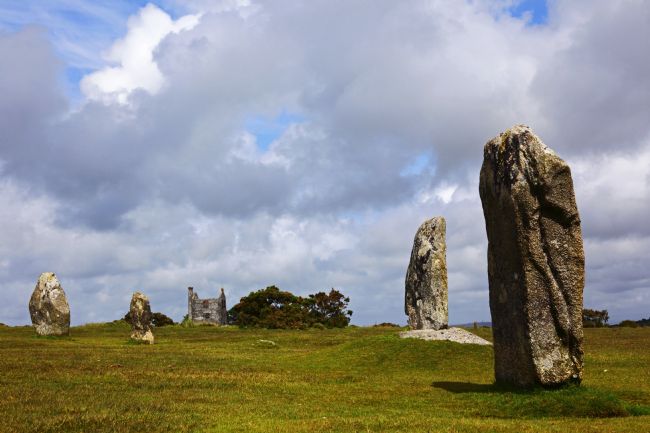The Hurlers is a group of prehistoric stone circles near Minions on Bodmin Moor, Cornwall. Legend says they were once a group of men who were transformed into stones as divine punishment for playing Cornish hurling on a Sunday.....! Around half the stones are still standing.
A view of the southern part of Fowey town and its harbour on the south Cornwall coast. Fowey is a historic town situated on the River Fowey estuary. It has been an important port for centuries as the estuary forms a superb natural harbour in the rugged Cornish coast. Black and white version also available, please send a message if you would like to see it uploaded!
A view of Fowey town on the south Cornwall coast, taken from the popular Hall Walk footpath. Fowey is a historic town situated on the River Fowey estuary. It has long been an important port as the estuary forms a superb natural harbour in an otherwise rugged coastline.
A view of Fowey town on the south Cornwall coast, taken from the popular Hall Walk footpath. Fowey is a historic town situated on the River Fowey estuary. It has been an important port for many centuries, the River Fowey estuary forms a superb natural harbour in the otherwise rugged Cornish coastline. Black and white version also available, please send a message if you would like to see it uploaded!
A sailing boat moored in the River Fowey near Fowey town on the south Cornwall coast, taken from the popular Hall Walk footpath. Fowey is a historic town that has long been an important port, the River Fowey estuary where it is located forms a superb natural harbour. The tower is St Finbarr church which dates from the early 14th century, there are records of a church being established here as early as the 7th century.
A view of the quaint little Cornish village of Bodinnick looking towards the River Fowey. A ferry from the bottom of this street connects it to nearby Fowey on the far bank, there has been a crossing here since at least the 14th century. The white building further down the street is the Old Ferry Inn, a lovely old pub that dates from the 17th century. The famous writer Daphne Du Maurier lived in the village.The famous writer Daphne Du Maurier lived in the village.
A view of the quaint little Cornish village of Bodinnick looking towards the River Fowey. A ferry from the bottom of this street connects it to nearby Fowey on the far bank, there has been a crossing here since at least the 14th century. The white building further down the street is the Old Ferry Inn, a lovely old pub that dates from the 17th century. The famous writer Daphne Du Maurier lived in the village.
A view of the quaint fishing village of Polruan on the River Fowey estuary opposite the historic town of Fowey on the south Cornwall coast. Both have long been important ports as the estuary forms a superb natural harbour in an otherwise rugged coastline. The castle on the end of the promontory dates from the 14th century, Dodman Point is the distant headland on the horizon.
Highland cattle or kyloe (native to Scotland) graze near a ruined tin mine building on Bodmin Moor, Cornwall. Cornwall was home to one of Europe's largest mining industries (especially tin) in the 19th century and the remains of many mine workings can stil be seen. This building was formerly the Housemans engine house and part of the South Phoenix tin mine; it is now the Minions Heritage Centre.
A highland cow or kyloe (native to Scotland) in front of a ruined tin mine building on Bodmin Moor, Cornwall. Cornwall was home to one of Europe's largest mining industries (especially tin) in the 19th century and the remains of many mine workings can stil be seen. This building was formerly the Housemans engine house and part of the South Phoenix tin mine; it is now the Minions Heritage Centre.
The ruins of the Prince of Wales engine house near Minions on Bodmin Moor, Cornwall. Cornwall was home to one of Europe's largest mining industries (especially tin) in the 19th century and the remains of many mine workings can stil be seen. This engine house was once part of the Phoenix United Mine which started operations in 1836 and finally closed in 1914
The ruins of the Prince of Wales engine house near Minions on Bodmin Moor, Cornwall. Cornwall was home to one of Europe's largest mining industries (especially tin) in the 19th century and the remains of many mine workings can stil be seen. This engine house was once part of the Phoenix United Mine which started operations in 1836 and finally closed in 1914
Some of the ruins of the Wheal Jenkin near Minions on Bodmin Moor, Cornwall. Cornwall was home to one of Europe's largest mining industries (especially tin) in the 19th century and the remains of many mine workings can stil be seen dotted acoss the countryside. The Wheal Jenkin Mine was working by 1824 and shut in 1890.
The ruins of the Bellingham Shaft engine house on the side of Caradon Hill near Minions on Bodmin Moor, Cornwall. Cornwall was home to one of Europe's largest mining industries (especially tin) in the 19th century and the remains of many mine workings can stil be seen. This engine house was once part of the part of the Wheal Jenkin Mine.
A black and white view of the quaint fishing village of Polruan on the River Fowey estuary on the south Cornwall coast. It lies opposite the historic town of Fowey, both have long been important ports as the estuary forms a superb natural harbour in the rugged coastline. The castle on the end of the promontory dates from the 14th century, Dodman Point is the headland on the horizon.
A black and white view of Fowey on the south Cornwall coast, taken from the popular Hall Walk footpath. Fowey is a historic town situated on the River Fowey estuary. It has long been an important port, the estuary offers shelter in a superb natural harbour in a rugged coastline.
A view of the southern part of Fowey on the south Cornwall coast. Fowey is a historic port town located on the River Fowey estuary. It has long been an important port, the estuary forms a superb natural harbour in the otherwise rugged coastline. Colour version also available, please send a message if you would like to see it uploaded!
The ruins of the New Phoenix Mine near Minions on Bodmin Moor, Cornwall. Cornwall was home to one of Europe's largest mining industries (especially tin) in the 19th century and the remains of many mine workings can stil be seen. This enginehouse was once part of the Phoenix United Mine which started operations in 1836 and finally closed in 1914
The ruins of the Wheal Jenkin Mine near Minions on Bodmin Moor, Cornwall. Cornwall was home to one of Europe's largest mining industries (especially tin) in the 19th century and the remains of many mine workings can stil be seen. The Wheal Jenkin Mine was working by 1824 and shut in 1890.
A view of Fowey town on the south Cornwall coast, taken from the popular Hall Walk footpath. Fowey is a historic town situated on the River Fowey estuary. It has long been an important port as the estuary forms a superb natural harbour in an otherwise rugged coastline.
Polkerris is a tiny fishing village near Fowey on the south coast of Cornwall. It was an important fishing port as early as the 16th century, and the village became part of the Rashleigh family's Menabilly Estate around the same time. Today the village lives as much from tourism as fishing. Much of the surrounding region has been declared an Area of Outstanding Natural Beauty and is noted for its spectacular coastal scenery.
Polkerris is a tiny fishing village near Fowey on the south coast of Cornwall. The village became part of the Rashleigh family's Menabilly Estate in the late 16th century, the white building in the centre of this image is the Rashleigh Inn. It was an important fishing port as early as the 16th century though today the village lives as much from tourism as fishing. Watersports are a popular activity, hence the windsurfing boards lined up on the beach.
Some of the standing stones at The Hurlers, a group of three stone circles near Minions on Bodmin Moor in Cornwall in south west England. They have diameters of between 42m /138ft and 33m / 108ft and around half the stones are still present. According to legend they were once a group of men who were playing Cornish hurling on a Sunday and were transformed into stones as punishment, hence the name.....! The building in the background was once the Housemans engine house and part of the South Phoenix tin mine; it is now the Minions Heritage Centre.
The Hurlers is a group of prehistoric stone circles near Minions on Bodmin Moor, Cornwall. Legend says they were once a group of men who were transformed into stones as divine punishment for playing Cornish hurling on a Sunday.....! Around half the stones are still standing.
